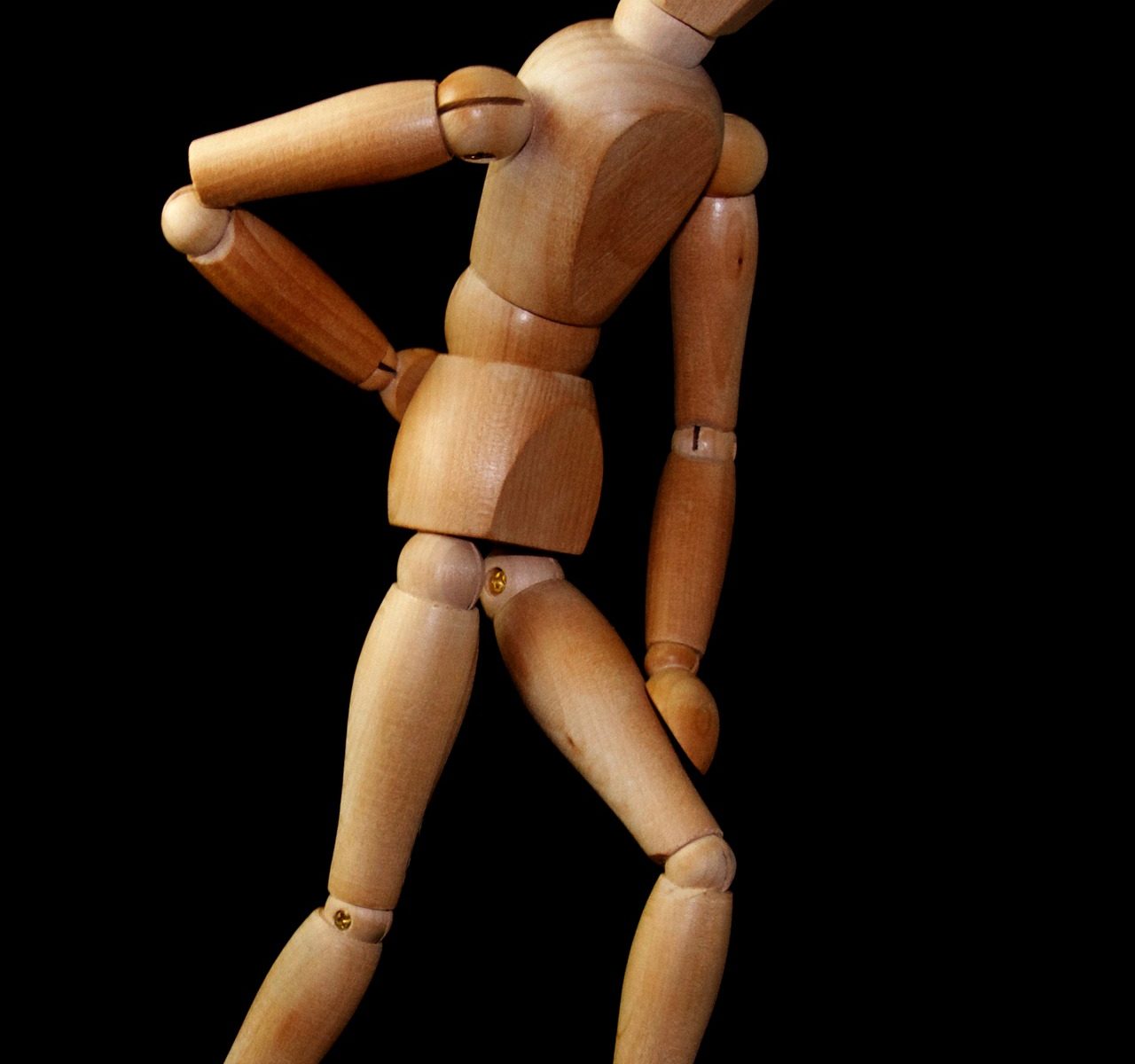Sciatica is a term that is loosely thrown around amongst people to describe pain in their backsides. True sciatica, however, comes from irritation of the sciatic nerve. This irritation causes pain in the low back, buttocks, and shoots down the back of the leg. Sciatic pain is typically described as sharp, stabbing and intense. Sciatic pain is not usually constant; it is felt with change in position or quick movement. Most people only experience the symptoms on one side of the body. In order to relieve sciatic pain, it is important to have an understanding of the anatomy of the structuresinvolved.
Sciatica is aptly named because the symptoms follow the path of the sciatic nerve. The sciatic nerve is a large nerve the runs along the backside of the legs, stemming from the nerves of the low back. Depending on where the nerve is irritated, different parts of the buttocks or leg can be affected.
Sciatic nerve irritation usually comes about when something compresses part of the nerve and causes irritation. This compression can be a result of back issues, arthritis, muscle tension and pressure. Some people are more prone to develop sciatic pain, including those with low activity level, obesity, older age, pregnant or with diabetes.
Even though the pain associated with sciatica can be quite severe and limiting, the symptoms are often resolved with conservative management, including specific stretches and acupuncture.
In a study published in 2013, researchers reviewed findings of 122 published studies that examined treatment interventions for sciatica relief. They looked to see what treatment interventions showed positive outcomes and what showed no effect. This meta–‐analysis determined that there were positive outcomes for medical interventions of pain medication, epidural injections and spinal surgery. They also found that acupuncture showed positive outcomes with resolution of symptoms after intervention. The benefit of acupuncture is that it is minimally invasive, unlike epidural injections and spinal surgery. In addition, acupuncture combines appropriate stretching for maximal outcomes.
Home stretches are important to relieve sciatic pain. They are easy to do and don’t take long. Find an open space on your floor or bed and allow your muscles to relax. Follow these stretches for sciatic relief: *Remember, you should feel a comfortable pulling sensation; do not push a stretch into pain.
1. Piriformis stretch: The piriformis is a triangular shaped muscle that runs closely to the sciatic nerve in the buttocks. When this muscle is tight, it can cause rubbing and irritation of the sciatic nerve. It is important to stretch the piriformis as part of your exercises.
a. Lay on the floor with your legs straight. Bring your left knee up toward your right shoulder. Reach with your right arm to give a gentle pull on your knee. You should feel a stretch in the side of your buttocks and hip. Hold this position for 30 seconds and repeat 3 times. Then, repeat on the other leg.
2. Knee to chest stretch: The buttocks muscles need to be stretched as they can contribute to sciatic nerve compression. The knee to chest stretch is easy and effective.
a. Lay on the floor with both legs straight. Bend one hip and knee and bring your knee straight up toward your chest. Hold this position with your arms until you feel a stretch
in your buttocks. Hold this position for 30 seconds and repeat 3 times. Repeat on the other leg.
3. Hamstring stretch: Because the sciatic nerve runs right along the hamstring muscle, it is important to stretch the hamstrings.
a. Sit at the edge of a chair with your leg extended in front of you. Your knee should be straight and your heel touching the floor, with your toes pointing up toward the ceiling. Keep a tall posture and hinge forward at your hips until you feel a gentle pull behind your leg. Hold this position for 30 seconds and repeat 3 times. Then, repeat on the other leg.
It is important to address sciatic symptoms early to avoid permanent nerve irritation and potential nerve damage. Conservative treatment with stretching and acupuncture can resolve symptoms quickly and effectively.
Reference: Lewis, R. A., N. H. Williams, and A. J. Sutton et al. “Comparative Clinical Effectiveness of Management Strategies for Sciatica: Systematic Review and Network Meta-‐‐analyses.” Spine J (2013): Oct 4.
Disclaimer: The material provided in this article is designed to provide helpful information on the subjects discussed. It is not meant to be used to diagnose or treat any medical condition. For diagnosis or treatment of any medical problem, consult your physician or healthcare practitioner.
A.Turchiaro 2020 ©

